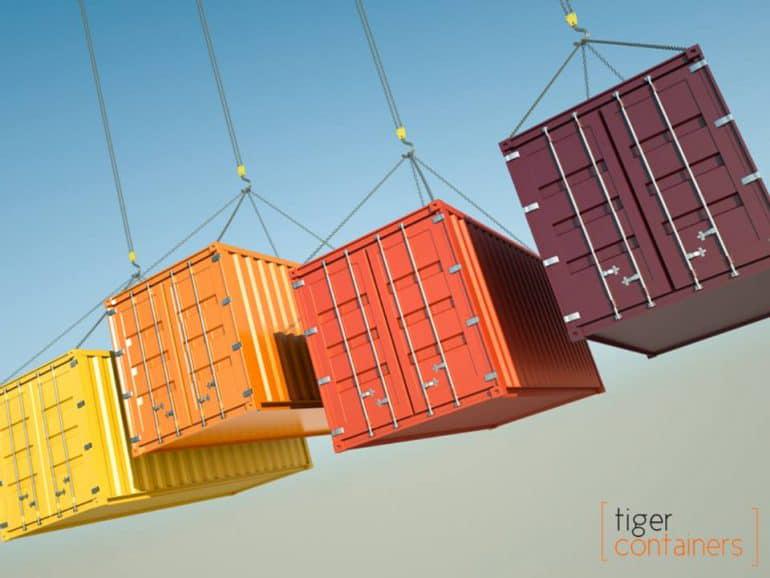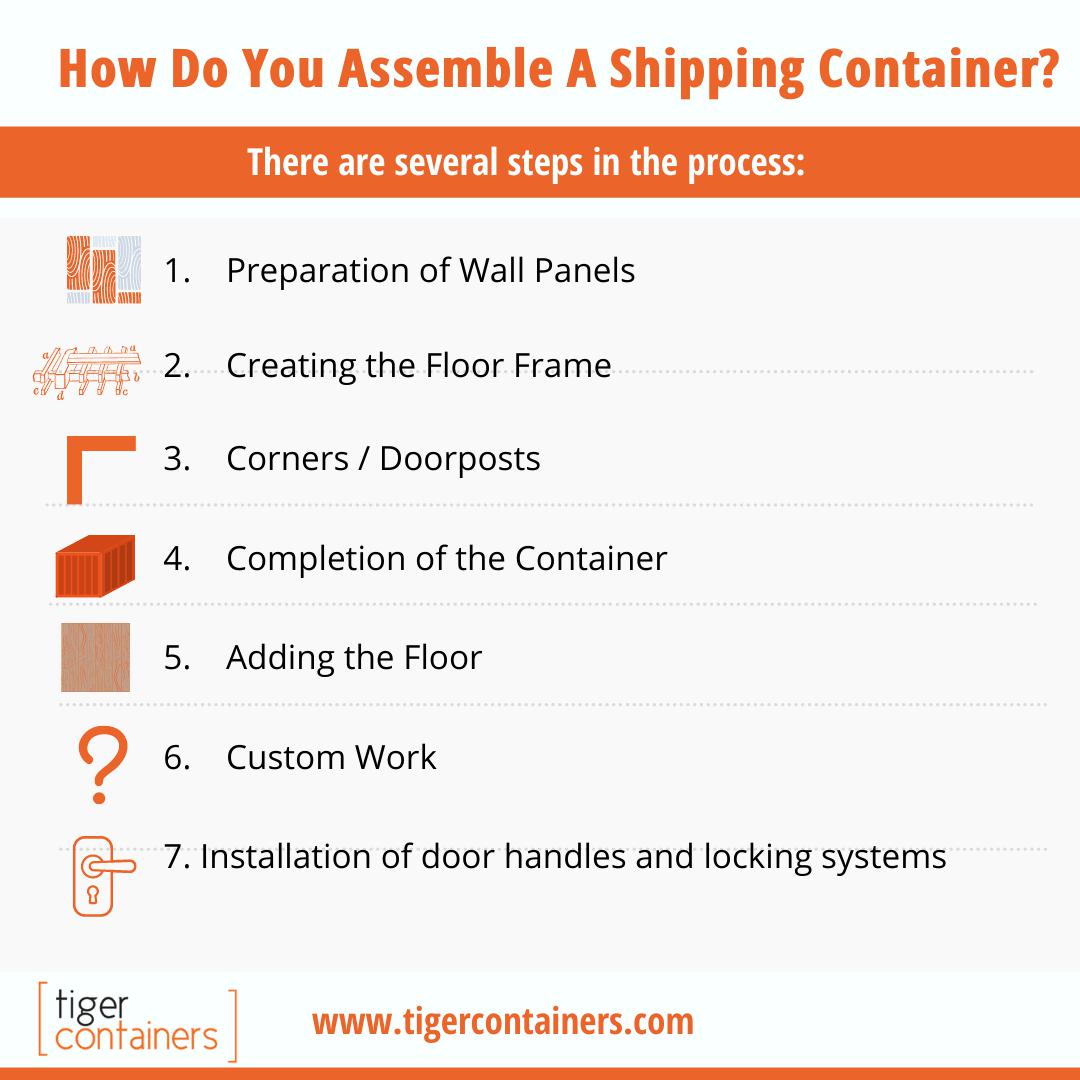How Are Shipping Containers Made?

Shipping containers have enabled us to transport cargo across oceans on massive container ships with containers stacked hundreds of feet high. Shipping containers are built in a variety of sizes and shapes and are available in 20, 30, and 40-foot sizes. Some containers are refrigerated while others are vented for air movement. Most shipping containers are constructed from steel and are closed in at the top with doors that open on hinges. Their walls are corrugated and the top and bottom of the walls are held in place with welds onto frames.
Shipping containers have been becoming more popular around the world with a sharp increase in demand once they have been used for their original purpose. The production of these large steel boxes has dramatically increased worldwide and the types of uses are unlimited.
It is an expectation that shipping containers will stand up to dramatically rough weather conditions on the open seas. While most shipping containers are constructed in Asia, their manufacture is not totally automated. The main material that containers are constructed from, Corten steel, needs to be cut and put together with many other components through a highly technical building process. Each separate component of a steel container is manufactured from Corten steel. This type of steel is manufactured from a wide range of steel alloys which makes it resistant to rust and does not need to be painted. While rust does form on this material, it is surface rust and does not penetrate deeper.
Steel Container Components
Shipping containers are all created following a standard build blueprint. They have the same or similar components, and these include:
-
Joints/beams – these assist with the support of the floor and create a space between the ground and the bottom of the shipping container to stop moisture from getting into the container from the ground. These joints remove any need for a foundation because they ensure that the container does not sit directly on the ground thereby reducing any chance that damage will occur from weather or environment.
-
Twist locks enable the connection of one container to another and to assist in holding it to a point that can be anchored. The end of a lock fits into a corner casting and can be turned to reach a lock position with the use of a lever.
-
Pockets for Forklift use – there are usually at least two slots at the bottom of a container called forklift pockets. This allows a forklift to lock into the container so that it can be lifted and moved to another location. It is safe for empty containers to be lifted but once they are loaded or have been modified, a crane may be needed to move the container due to its extra weight.
-
Corner Castings – these are the corners of the shipping container that are reinforced and have openings where twist locks connect to more containers. These are very strong because they are designed for crane lifts, even when the shipping container is fully loaded.
Assembly of the Shipping Container
The fabrication of shipping containers starts with a large roll of Corten steel. This roll is rolled out, cut into sheets and then prepared to be assembled. There are several steps in the process:
-
Preparation of Wall Panels
After being unrolled, the Corten steel is cut into pieces that are 3 x 8 feet. Each sheet is then prepared by sandblasting it and then priming it so that all contaminants are fully removed. The pieces are altered by corrugating them to improve their strength, then they are connected by welding them to create the wall panels.
-
Creating the Floor Frame
The tops of the wall panels are prepared by welding square tubing along the top surface. The floor frame is created with the assembly of the panels with I-beams, and longer beams being welded together. More I-beams are welded to create a base that becomes a slab. Once the welding process is complete, the floor frame is sanded with a grinder to remove messy welding joints.
-
Corners / Doorposts
Next, the container’s front and rear must be created. The doors are created using corrugated steel which is outlined with square tubing which is welded around the outside of the door. The welds are all sanded to eliminate any joints that look messy. The posts in the corners are connected to the I-beams so that the doors can be attached to them.
-
Completion of the Container
Once the walls have been formed, welded and installed, the roof panel can be added and welded on. Once completed, an undercoating is applied to the container so that any future paint will stick to the container. Multiple layers of primer are added to the container one layer at a time so that the container will be protected against salty sea water and extreme weather conditions.
-
Adding the Floor
Once the floor frame has been completed, wooden flooring is added. Plywood is coated with a protective coating so that insects will not access the wood. Once the panels have dried, they are screwed into the floor beams to hold them firmly in place.
-
Custom Work
Once the container has been fully assembled and primed the container receives its logo and any marketing materials. Every shipping container has an identification code so that it can be carefully tracked around the world. There are 11 characters, each with a different meaning:
-
The first three characters are a key to identifying the manufacturer.
-
The fourth character is the type of container (U is a shipping container, J is a power unit or equipment; Z means a trailer is needed to move the container).
-
Characters 5 – 10 are a serial number that helps the manufacturer to identify the container.
-
The last character is called a “check digit” which is used to verify the rest of the number.
-
The final stage of shipping container manufacture is installation of door handles and locking systems. The doors are fitted with a rubber seal to ensure that the container is completely watertight. The container receives a waterproof sealant on its bottom and then it is placed in water to check for leakage. If the container is ok, it is then used for shipping.
Shipping container manufacturers must follow certain construction standards in their design and manufacture process. This ensures that containers meet certain criteria and will not fail or cause unnecessary death or injury. Every shipping container must be inspected and certified before it is used in the transport of cargo. If the container meets the standards it is labelled with a CSC plate which signifies that it meets the standards of the International Convention for Safe Containers.
Images from https://www.tigercontainers.com/











